The Conceptual Iteration: Turn Your Iterative Process into a Concept Factory
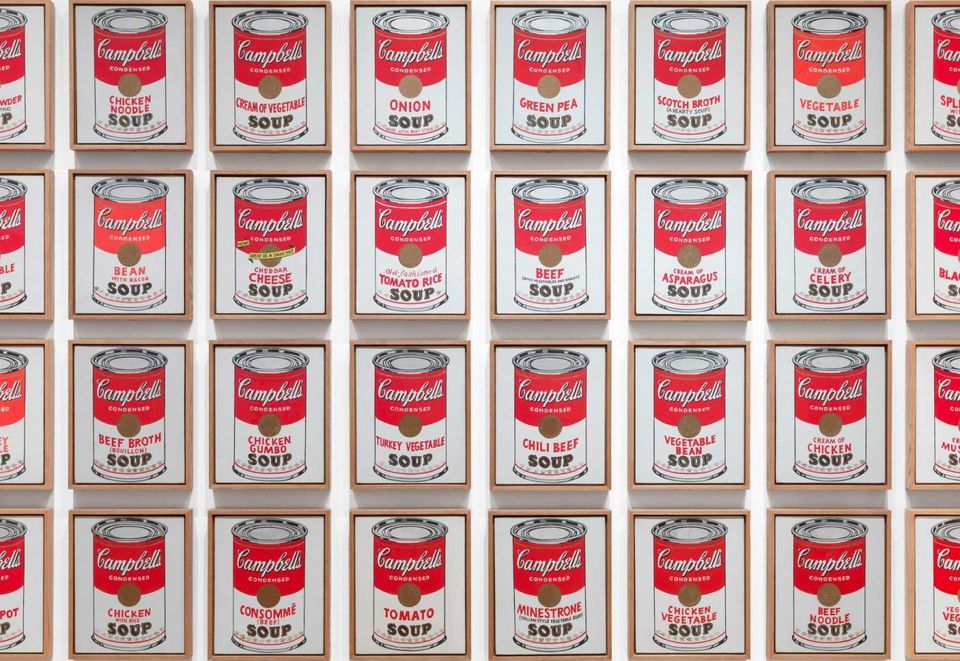
In the late 1940s, a form of art called abstract expressionism — best represented by artists like Rothko, Jackson Pollock, Willem de Kooneg — arose from the aftermath of World War Two. Simply known as Abstract Art, the style was deeply existential and grounded in philosophical depth, expressive intensity, and the serious and somber context of a new, post-nuclear world.
In short, it was pretty stuffy.

And in the late 50s, the pendulum swung in the opposite direction, with Pop Art blending the lines between high and low art, breaking the back of the art establishment and bridging it with mass, consumerist culture through sheer force of will and volume.

Andy Warhol was the undeniable king in the pop-art movement. As an Artist he was rare in the sense that he not only liked capitalism and consumerism, but reveled in it. Warhol spent much of his time in advertising and media before becoming a full time artist. He was fascinated by mass media, and turned his studio, The Factory, into an art production machine that connected with mass market sensibilities, churning out art at record pace through iteration and screen printing.
In that way, the proliferation of performance marketing is akin to pop-art in the context of business. While the dark secrets of direct response marketing have always been known to great copywriters like Ogilvy, late-night TV infomercials, QVC, and direct-mail newsletters, throughout the 20th century marketing has largely been known and celebrated through the context of great brand marketing campaigns and high tastes.

That was all turned on end by digital marketing, user identifiers, tracking, and the development of precise targeting algorithms by Facebook and Google that reached a magnificent crescendo in the last few years, shining a light on the force-multiplying impact of good direct response advertising and its magic ability to launch products into orbit.
In this environment, the high-brow culture, relationships, and subjective opinions of brand agencies were forced to face the facts about the realities of the digital world, and low-brow marketing began to reign supreme, with advertisers trading in their polished brands to blend into the look and feel and general strangeness of social media and the world wide web, churning out ads at breakneck speed.
The Creative Curve Revisted
As discussed in previous chapters, the most impactful creative ideas tend to sit squarely in the middle between what is known and what is novel. The apex of this point is defined as the creative curve.

Andy Warhol understood the creative curve deeply and navigated right to its highest point with pop-art.
As a creative strategist, this is where you want to be optimizing toward for yourself, and where you should be calibrating your team toward — hitting the perfect cross-over between your product and the mass market trends with your ads.
Due to the legacy attitudes of brand marketing, by rule I think it is too easy to get stuck in the part of the curve that is too conceptual.
The tools we’ve explored with The Competitor Breakdown, the basic iteration, and the advanced iteration help to get conceptual and creative thinkers into the realm of iterative thinking, moving them from “too-conceptual” to “just-right”. This can sometimes take some time, but given enough cycles of looking at data and the right incentives, it’s my experience that team members buy into and revel in the game of optimizing CAC through iteration.
On the flip side, these tools were also created to ramp up media buyers who have never made ads and don't see themselves as creative, starting with the most discrete foundations and gradually getting more conceptual, until we sit right at the most impactful part of the creative curve.
The exercises of the creative breakdown and iteration on components of ads (via the basic iteration) and copywriting (via advanced iteration) teaches them core fundamentals in a very linear way that is well-aligned with the technical mind of a media buyer.
I have found that the familiar mindset and early success often kicks off a flywheel of engagement and empowerment to become more creative.
But there are downsides of iteration, too. Namely, that it works well enough that many team members never want to cross the gap into the conceptual realm. For teammates wading in the waters of “too-familiar”, we want to push them toward being more conceptual.
This is where the conceptual iteration comes into play, bridging the gap between iterative and creative thinking. And it’s done by working through a classic exercise, called the Mind Map.
The Mind Map
The education system and working world are standardized by linear approaches to learning and working. Notes are categorized, chunked into sections and bullet points in sequential succession.
Spreadsheets, tables, schedules, business cases — you get the picture.
For many technical people, after a lifetime of working in this matter, they simply don’t have the thought patterns or mental models for thinking non-linearly. We find these standardized ways of working to be functional for scaling procedures, institutions and corporations — but they are flawed in relation to creative thinking, or even how human brains naturally wants to work.
The human brain is not amazing for it’s raw linear computing prowess. What makes the human brain so impressive is the ability to compute in parallel, and to think in terms of association. The brain is a complex interweaving of one million, million (12 zeros) neurons. Each neuron is capable of contacting and embracing as many as 10,000 or more proximate brain cells in the same instant (The Mind Map, Tony Buzan). Moving from a linear model of thinking to one of association is the key pillar to harnessing the full creative power of the brain.

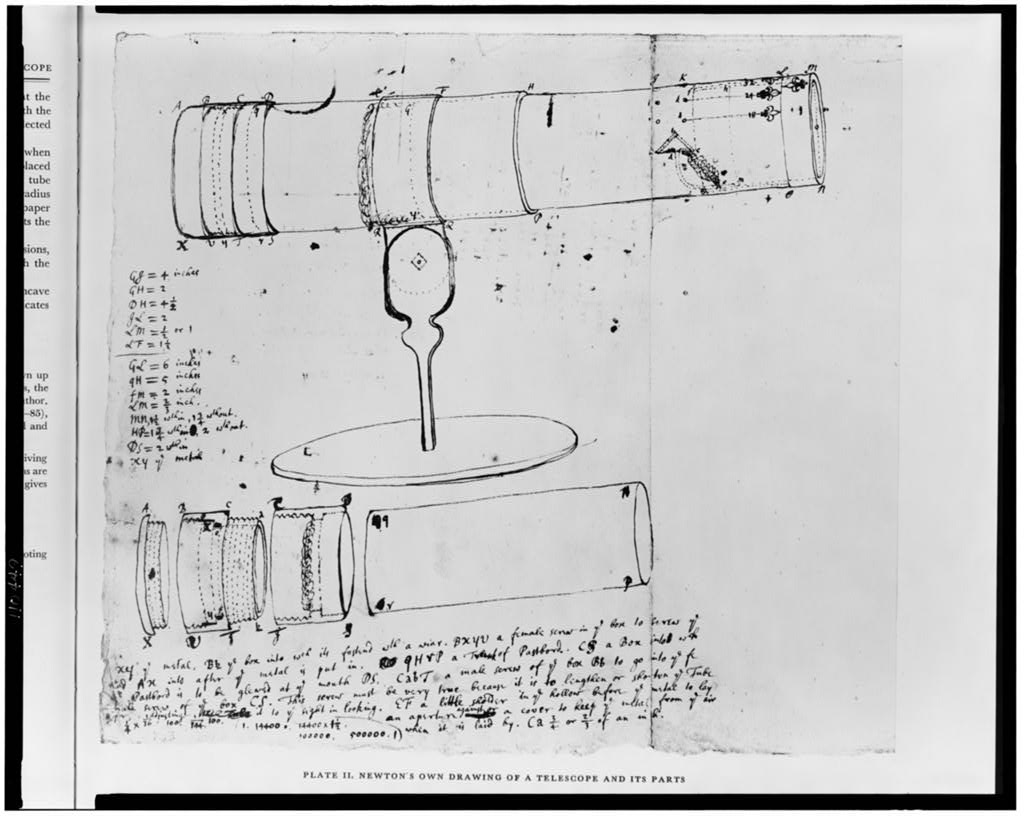

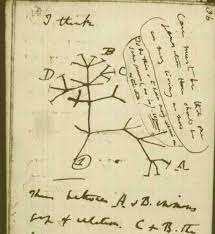
Great thinkers, from Darwin to Da Vinci have known this and relied on an intermix of writing, words, and visuals to structure their ideas and bring them to life.
The mind map was made in this image, combining all of the associations and tricks of the mind (use of color, image, associations) to maximize creative ability, recall, and forge new pathways for thinking.
What is the Mind Map?
Traditional Mind-Mapping, as explained by Tony Buzan, is a free-wheeling form of thinking that invites us to let our associations between ideas come to life using all of our full faculties: words, images, colors and more.
The Competitor Breakdown, basic & advanced iterations serve their purpose in helping us master the foundations of advertising by acting as proper constraints for improving our skills. But they also keep us boxed in. Once someone has displayed a functional knowledge of basic and advanced iteration (usually through several wins in both categories), I assign them a Mind Mapping exercise and push them toward the next level of iteration, called The Conceptual Iteration.
Mind Mapping our existing knowledge pulls us up to the thousand foot view, galvanizing our mental model of creative strategy. It gives us a treasure trove of new ideas by activating the latent associations that exist between the parts of creative strategy that have previously been held in isolation.
How to mind map your ads strategy
Most mind mapping pulls together colors, images, and words to enhance our creativity.
For ease of use in today’s exercise, we are going to stick to basic word mappings and categorization of all the elements we’ve broken down in The Meta Game creative menu.
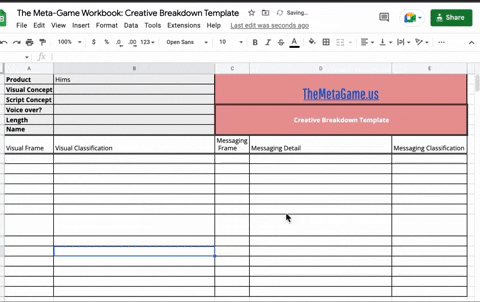
My favorite tool for this is Miro, and you can find the completed mind map for today's exercise here. If you haven’t done the previous exercises of The Meta Game, I recommend reading the articles about competitor copies, then basic and advanced iterations and getting a general handle for iterative creative first.
While there are general rules, I don’t believe there is a “right” way of mind-mapping — the point is to explore, play with, and evolve your own mental models and as a result form new understandings and associations. The act of putting your mental model down on paper is what is going to wire up all the connections in your own mind and activate new possibilities.
In my mental model, I typically think in terms of Elements (ingredients) and Frameworks (recipes).

Within Ad Elements, there is copy, and there are visuals.
And within ad types, there are typically images, and videos.
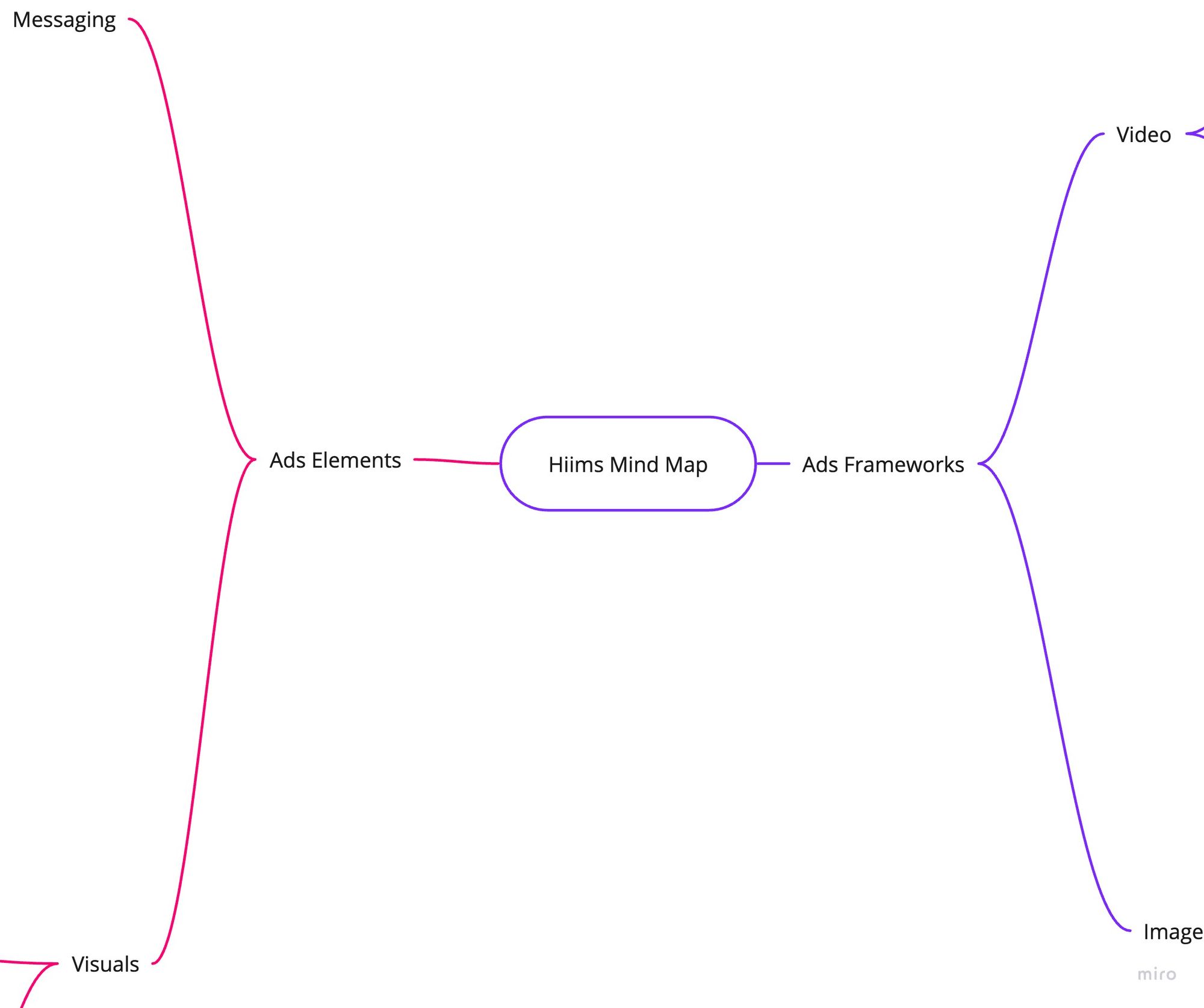
I tend to break down messaging into problems, value propositions, objections, hooks, testimonials, etc, which are very straightforward and already exist in our workbook
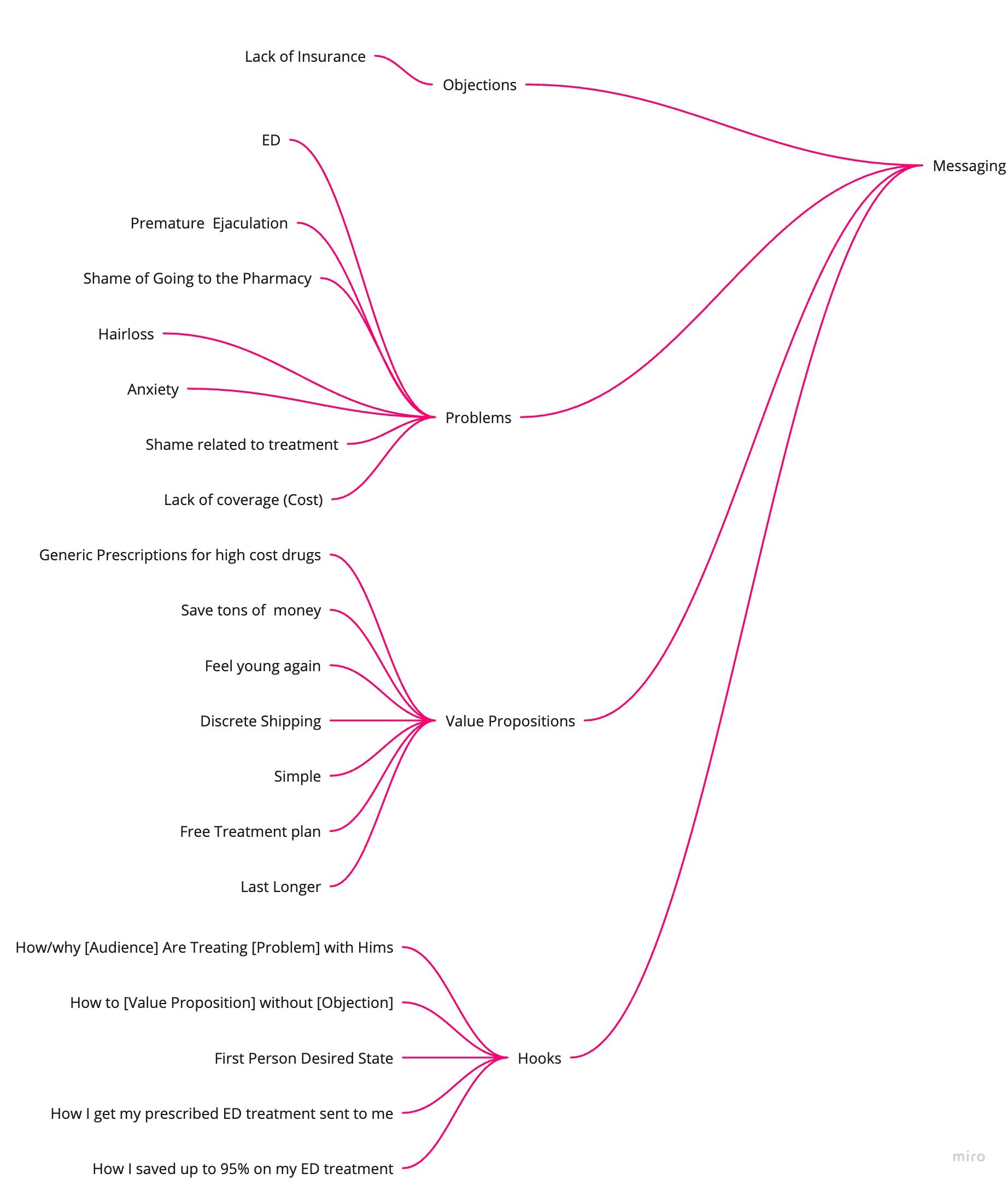
Frameworks are by nature much more abstract, and working through categorization of these will force you to think about how you define these things in your own mind.
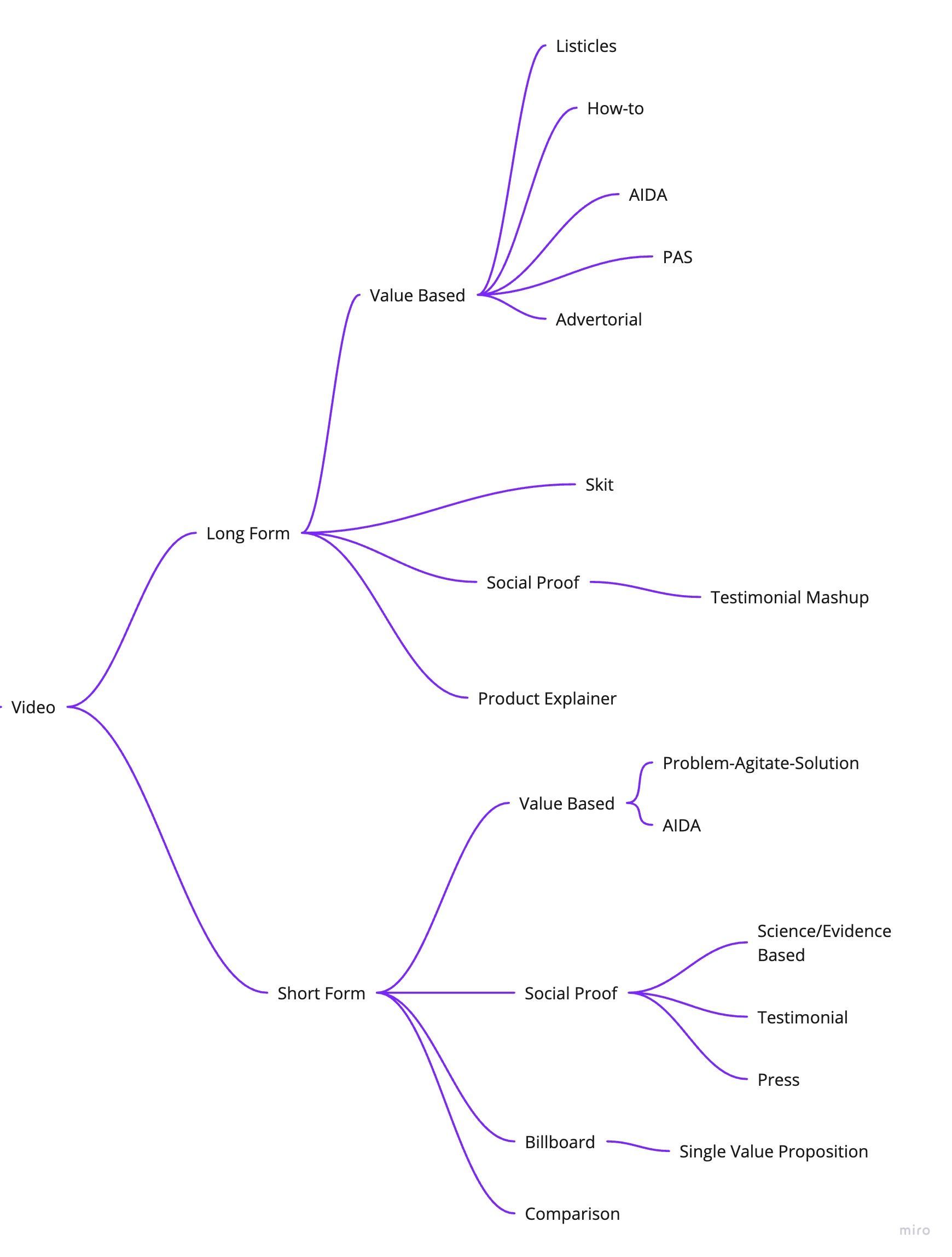
After working through all of our nodes, we will have a completed mental model of our entire ad strategy.
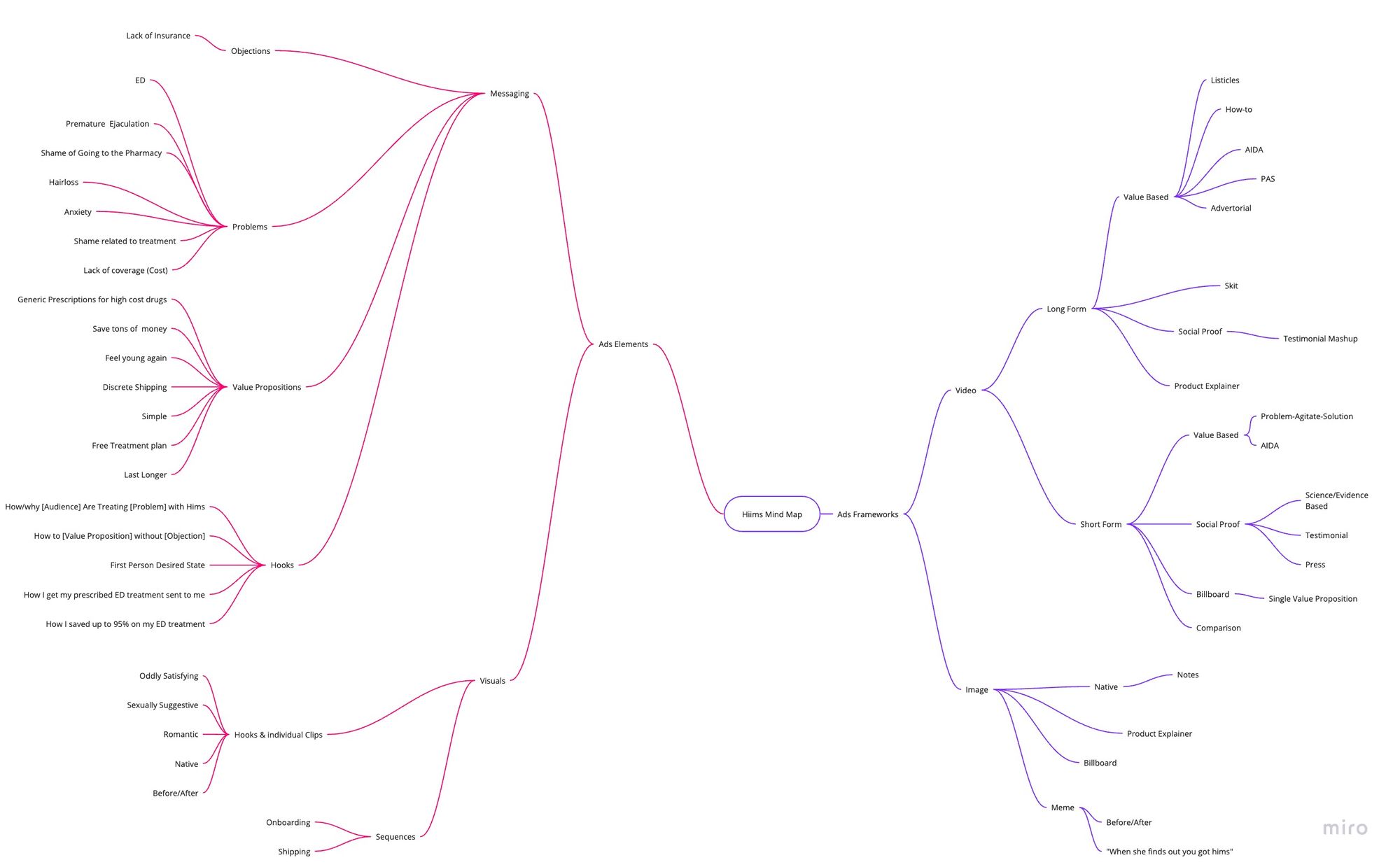
The Conceptual Iteration
Through this exercise, parts of your ads that felt compartmentalized and in isolation will form tight neural connections. Immediately you might realize there are value propositions, hooks, or visual sequences that you have never tried pairing together. It is common to find yourself imagining dozens of new ways to extend or combine frameworks.
For example, when looking at this strategy, I suspect that Hims can extend their luck with native, “Notes” images by expanding in this territory to other native-to-phone concepts like a fake tweet or Notion note — or maybe a reddit threads concept, given that r/RelationshipHelp is a top reddit community.
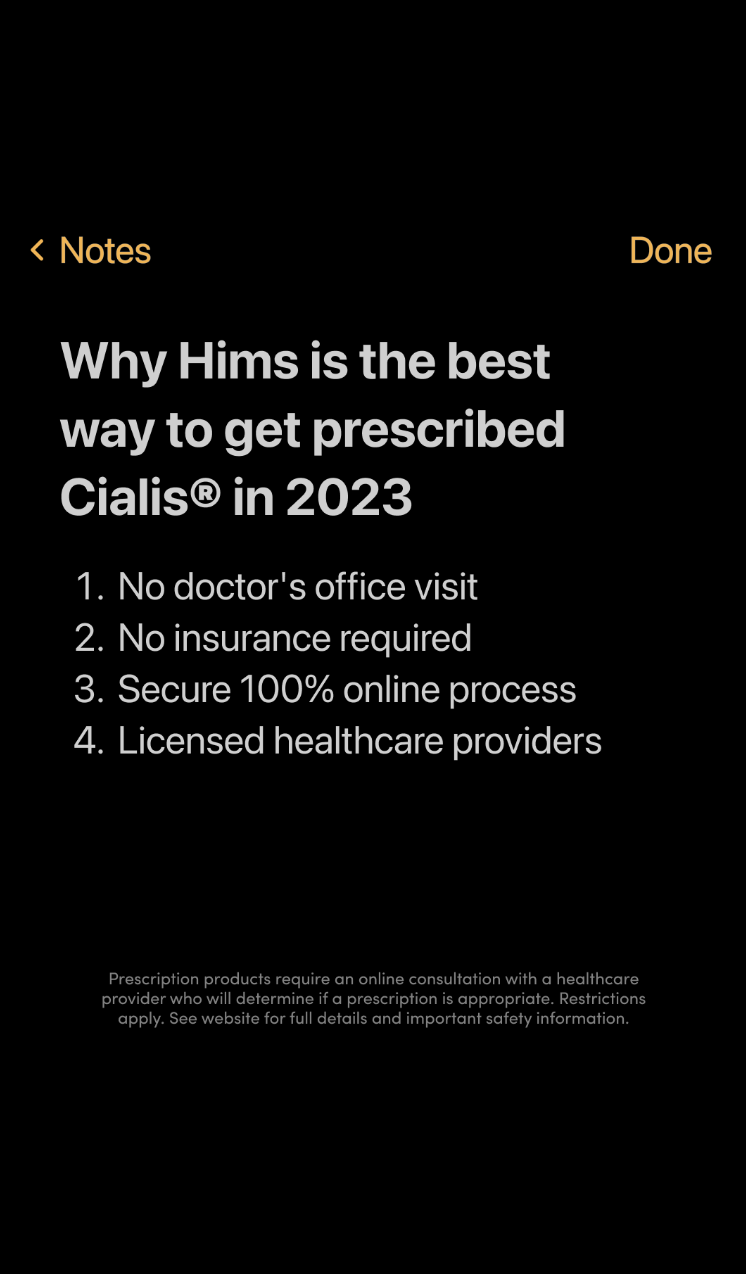
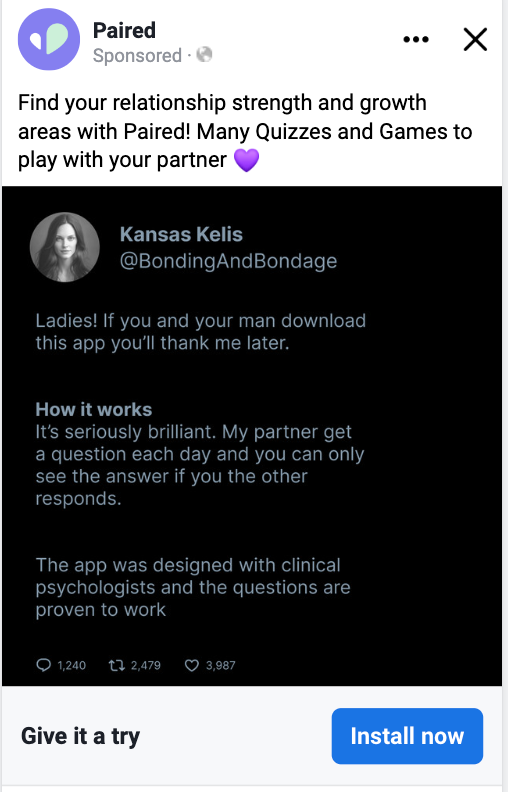
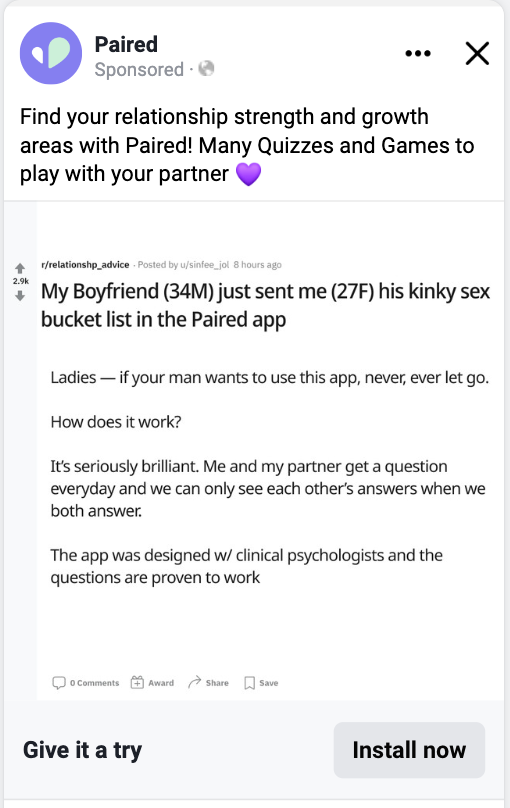
Then if these are successful in this area, perhaps they use native frames as visual hooks for their top performing long-form value prop ads, combining them with oddly satisfying hooks for an extra-native effect.
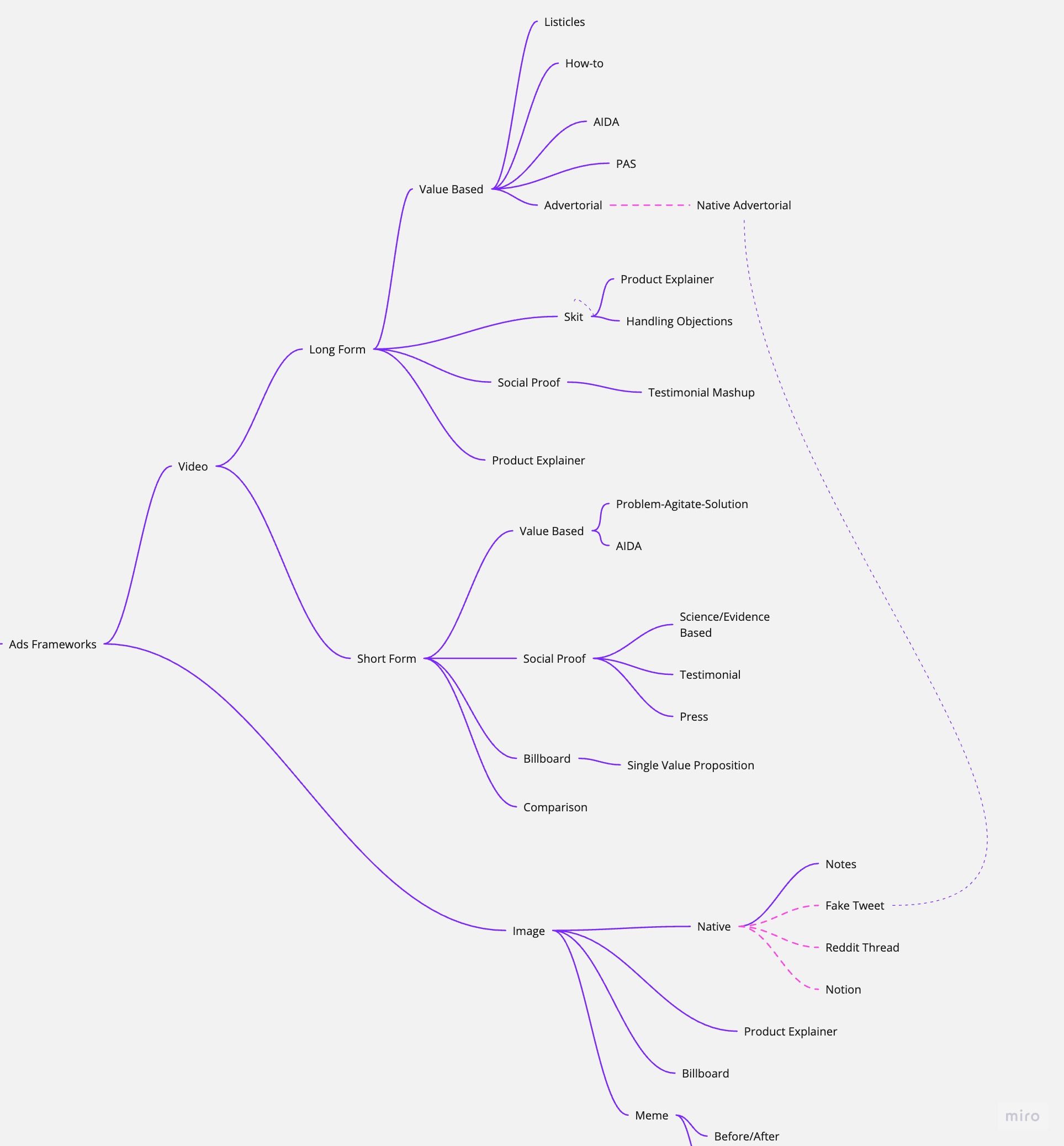
This extension or mashing together of existing elements is why this exercise is called “the conceptual iteration”, instead of purely “concepting” or “iterating”. It isn’t modular or exacting in nature, as is component based iteration. But it’s not bringing to the table new ideas either. It’s some middle ground between the two, a form of creating by smashing together and then smashing together again.
The conceptual iteration is a bridge to creativity built by being resourceful with what is already ours and what we know to work — at a gradually higher level of complexity. It gives us time to take a moment and to understand how all the parts of our ads are interconnected. We see how the problems our customers face are connected to our most important value propositions, or remind us of the objections and frictions our customers experience and how they relate to our features. We see, most likely, how our best testimonials tend to be well-structured value propositions.
And then we see how these all tie together to form key frameworks.
We get a greater sense of the overall types of ads that resonate with our consumer base, and what things can still be mashed together to fill the smaller gaps. And we can hypothesize what the big, juicy, untapped market niches are based on what isn’t present.
Moving Forward

In the next installment of The Meta Game, we’ll continue pulling ourselves to higher levels of abstraction. We will continue building on top of our existing ads strategy and try to pin down new, juicy pockets of potential customers by becoming masters of the internet and forming a pulse on the broader mass market. You will walk away with new tools for tracking trends across the web and studying top performing strategies from adjacent industries. In this way, we continue thinking of new ad ideas in gradually more conceptual ways while still respecting the signals that say the ideas have a market.
If you have found The Meta Game interesting and useful, please subscribe to the newsletter, and share with your friends. The support is super helpful and helps to make sure that I can continuing putting energy into this.